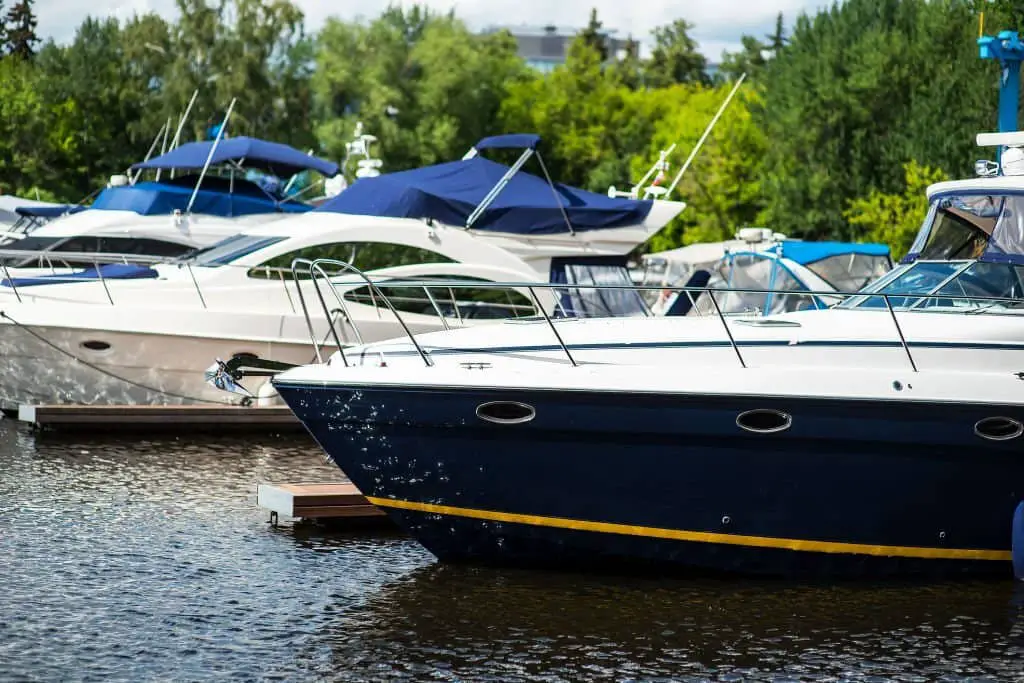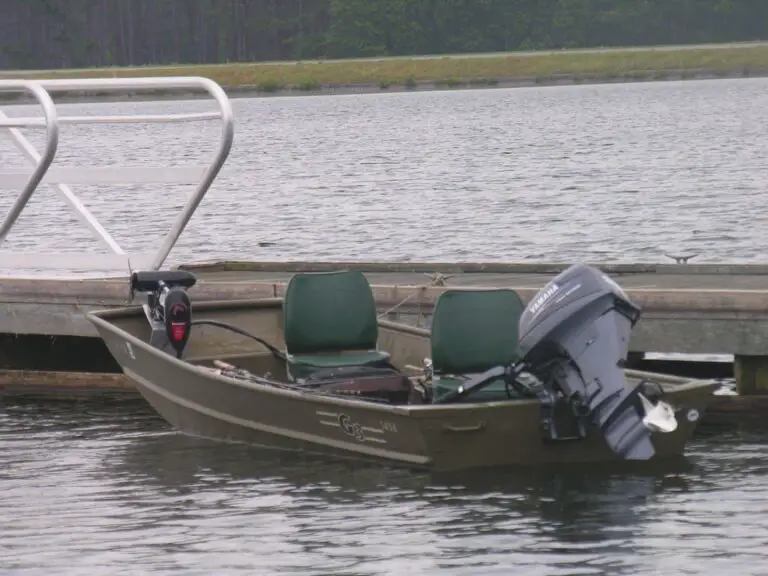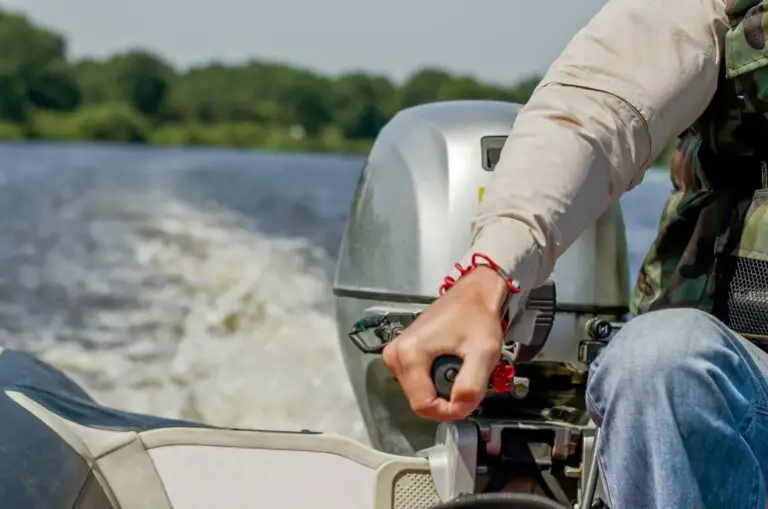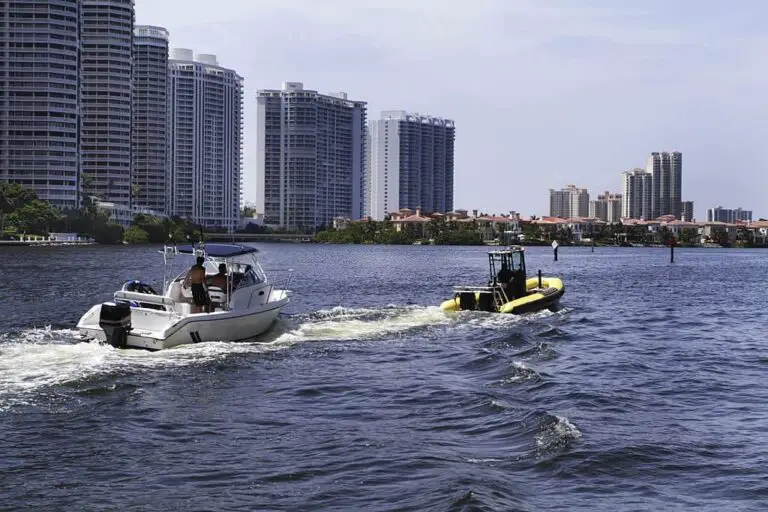
If you are a first-time owner, you must ensure that your boat operates as well as it possibly can.
It entails maintaining a balanced weight distribution to keep the vessel level at stable speeds and during turns.
All reliable watercrafts have this built-in functionality, but problems may occur if you modify them with aftermarket components.
What about adding weight to the front of the boat? Does this solution return your vessel to a balanced distribution?
If yes, how to carry out this task? Wait no longer! Let’s refer to this article to get some valuable tips!
Should You Consider Adding Weight To The Front Of A Boat?
Let’s briefly go through why you may need to add heaviness to the front of the watercraft before exploring the best techniques.
The key to any successful hull design is achieving balance, which is crucial for a boat that performs smoothly.
Your watercraft’s back will become significantly heavier than the bow if you install a trolling motor, additional passenger seats, a more prominent main engine, or other aftermarket components.
Besides, your boat’s weight distribution may get out of hand when you add the outboard bracket.
It occurs due to the motor and other bulky items significantly lengthening a lever arm.
The idea of a well-balanced vessel transcends all platforms, no matter how big or tiny your watercraft is.
The bow of your vessel is forced to be heavier above the usual level. However, numerous factors might make carrying too much pressure in the rear problematic.
For this reason, you should weigh every component like a tower, electric motors, electronics, air conditioning, holding tanks, or generators before installation.
Can you add weight to the front of your watercraft if the back is heavy? Let’s consider the following reasons:
Porpoising
Porpoising occurs when your vessel’s front leans too far forward at a fast speed as a result of the unequal distribution in weight.
It will become precarious when you run into approaching waves or wakes.
Additionally, it hinders your vessel’s maneuverability and slows down how quickly you can turn.
Poor handling
The flexibility to steer and turn radius decreases dramatically when the boat’s bow is above the water.
Adding too much heaviness at the stern of your watercraft can damage hulls with outstanding turning radiuses.
Inadequate speed performance
Planning is essential for every sort of water sport. Also, your boat must operate at its peak speed.
Low fuel efficiency
Your vessel will use more gasoline overall and accelerate if there is an imbalance in the weight distribution.
Greater likelihood of water splashing
If the rear is overloaded, the watercraft leans toward the waters in the tail.
It may cause wakes and waves to flow over the border onto where you sit without an outboard bracket.

How Do You Add Weight To The Front Of A Boat?
After knowing a heavy stern may cause several problems, it’s time to add weight to the front of your vessel.
Below are the easiest ways to increase the heaviness of the bow. Let’s get into details!
Fill Up Any Open Spaces In The Front With Sandbags.
Simply purchasing several sandbags and loading them into your boat’s bow is the simplest method to add heaviness to the front.
Place them within whatever covered space you have. If the vessel is unbalanced, add sufficient bags, so it handles more than it does when you use it for the first time.
They are available from your neighborhood hardware or building supply store.
Provide Your Boat With A Water Bladder Or Sack.
A giant water bladder attached to the front of the watercraft may add additional mass to balance it out, just like the sandbags do.
You can also use water bags instead of a water bladder. You can quickly fill them up, empty them, or remove them if you need to change the vessel’s weight.
Additionally, they are less messy and leaky and make it easier to adjust the boat’s distribution than sand.
Add Many Cinderblocks To Your Boat’s Front.
Simply placing some cinder blocks in the boat’s front is another typical method of adding mass to the bow.
Cinder blocks may be an affordable and excellent solution for vessels with somewhat uniform weight distribution.
Additionally, you may get them at nearby hardware or building supply stores.
Add Some Used Lifting Weights.
Adding actual lifting weights to your boat’s bow is another simple way to add heaviness to the space.
Ensure these items are rubber or zinc coated or made of stainless steel. As a result, they won’t rust and cause a mess inside your vessel.
If you expect to prevent them from rusting, you might also place them in a big plastic bag.

Tips For Weighing Down The Boat
If you want to weigh your boat, the following tips may be helpful. Let’s check them out!
Organize every storage space, starting at the front and working the way back, putting just what is necessary back.
You should remove older sunscreen bottles, an additional cooler, extra fishing poles, and extra towels.
Since the hull of a lightweight vessel sits a bit high in the waters, it will speed more rapidly and operate with less drag.
It could also respond to trim better, which may further minimize drag.
To avoid weighing down the front, try to store bulkier goods you wish to have on board—such as a backup propeller—in an extra storage aft of the bow.
If the vessel has storage tanks, empty the water in these containers when you need to go as quickly as possible.
Read More: Outboard Primer Bulb Not Getting Hard: 3 Main Causes & 4 Solutions
The Bottom Line
Adding weight to the front of the boat is necessary to make the total distribution balanced when in the water.
Luckily, you can apply various methods to make your vessel’s heaviness equal, like using sandbags, a water bladder, or cinder blocks.
If you have further questions, please feel free to comment below. We’re glad to answer them all. Thanks for reading, and see you in the next post!

I’m Cindy, a free-spirited outdoor enthusiast. Since childhood, Our family frequently goes on weekend camps and my father, who was a skilled hunter, used to teach my siblings and me valuable things about wildlife survival. I made this blog to share my knowledge, experiences, and tips.






